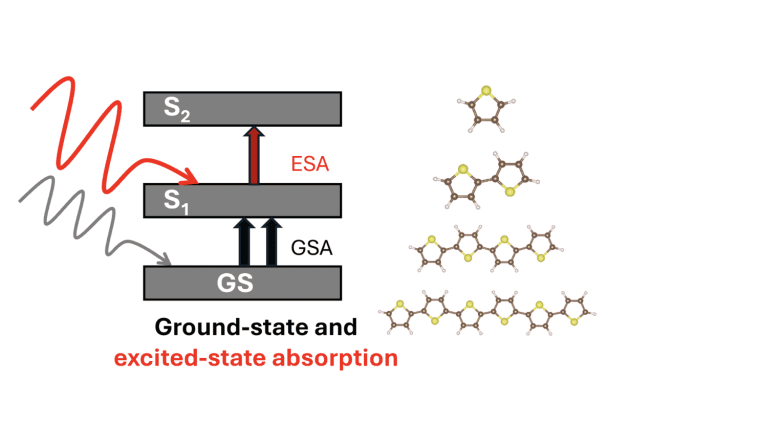
Published:
Prof. Cocchi and her team have identified the key physical mechanism that makes oligothiophenes, a class of highly flexible, tunable organic molecules, ideal candidates for optical limiting, a nonlinear optical mechanism which is essential for protecting human eyes and sensitive sensors from powerful laser damage.
The paper, published in The Journal of Physical Chemistry LettersExternal link, uses cutting-edge quantum mechanical simulations to demonstrate that these molecules exhibit strong excited-state absorption in the near-infrared to visible light spectrum. This finding effectively opens a new pathway for the rational, computer-aided design of materials that complement existing laser safety solutions.
The team used a non-perturbative computational approach to simulate the response to the molecules to intense radiation, which causes the appearance of a new absorption band in the near-infrared to visible region, below the linear absorption onset. Using pump-probe simulations, Prof. Cocchi and coworkers confirmed that this behavior is entirely driven by populating high excited states: Once a photon excites the molecule to its first excitation, the molecule immediately becomes a hungry absorber for a second, lower-energy photon, effectively blocking dangerous intense radiation.
The results disclose the potential of oligothiophenes as active components for optical limiting applications in the near-infrared to visible band, providing chemists and engineers with new compounds for customized, broadband protection systems.